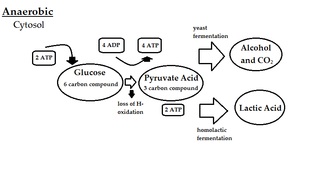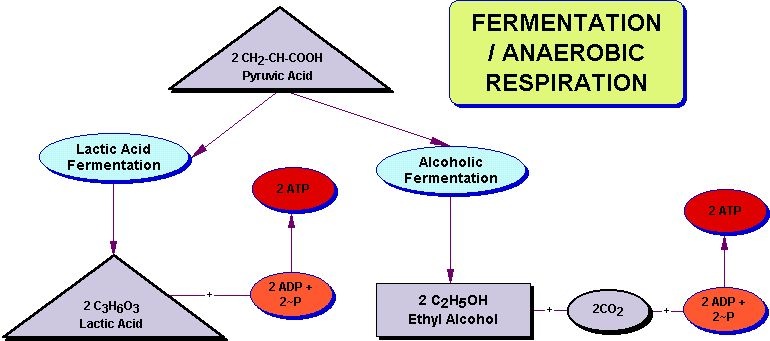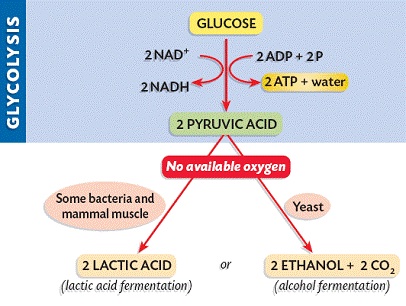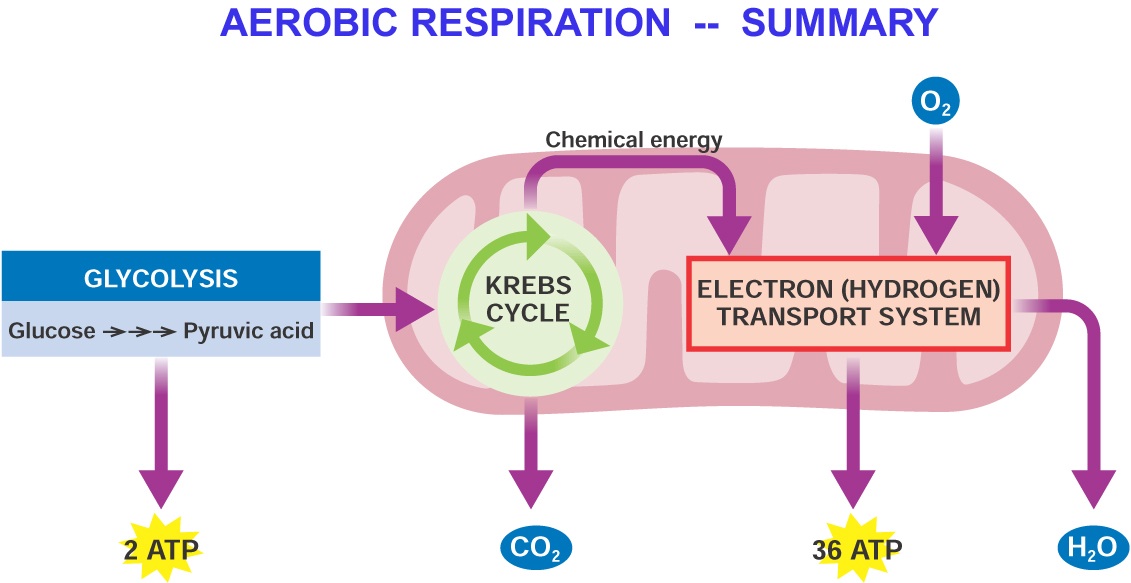Introduction
 The combined process of this pathway and glycolysis is called fermentation. Fermentation releases energy from food molecules by producing ATP in the absense of oxygen. Since fermentation doesnt require oxygen it is considered anaerobic too. Anaerobic means not in air.
The combined process of this pathway and glycolysis is called fermentation. Fermentation releases energy from food molecules by producing ATP in the absense of oxygen. Since fermentation doesnt require oxygen it is considered anaerobic too. Anaerobic means not in air.
Task

In order to get you to understand anaerobic respiration and fermentation better, you will be reading three different websites and answering three different questions for each website.
Process
http://www.culturesforhealth.com/what-lacto-fermentation/
- What does Lactobacillus bacteria have the ability to do?
- What is lactic acid?
- What did lactobacillus organisms produce?
http://www.tempeh.info/fermentation/alcohol-fermentation.php
- What is alcohol fermentation done by?
- What occurs in the process of alcohol fermentation?
- What is the scientific name for the microorganism is used?
http://dr282zn36sxxg.cloudfront.net/datastreams/f-d%3A82218202b797ff7d4…
- What is the advantage of the aerobic respiration?
- What is the advantage of the anaerobic respiration?
- What is the difference between aerobic & anaerobic respiration?
Conclusion

 Anaerobic respiration is a cellular respiration that doesn't require oxygen while aerobic respiration does require oxygen for cellular respiration. Anaerobic respiration can lead to lactic acid fermentation and alcohol fermentation. Both aneadrobic and aerobic cellular respiration have advantages. Anaerobic respirations advantages is that it lets organisms live where there is little or no oxygen and also it produces ATP quickly. Aerobic respirations advantage is that it produces a lot of energy.
Anaerobic respiration is a cellular respiration that doesn't require oxygen while aerobic respiration does require oxygen for cellular respiration. Anaerobic respiration can lead to lactic acid fermentation and alcohol fermentation. Both aneadrobic and aerobic cellular respiration have advantages. Anaerobic respirations advantages is that it lets organisms live where there is little or no oxygen and also it produces ATP quickly. Aerobic respirations advantage is that it produces a lot of energy.